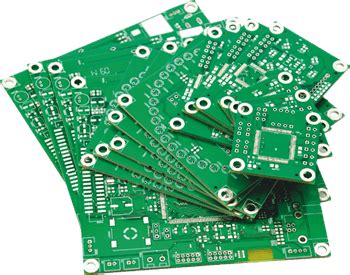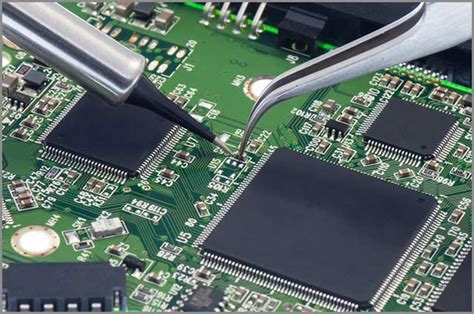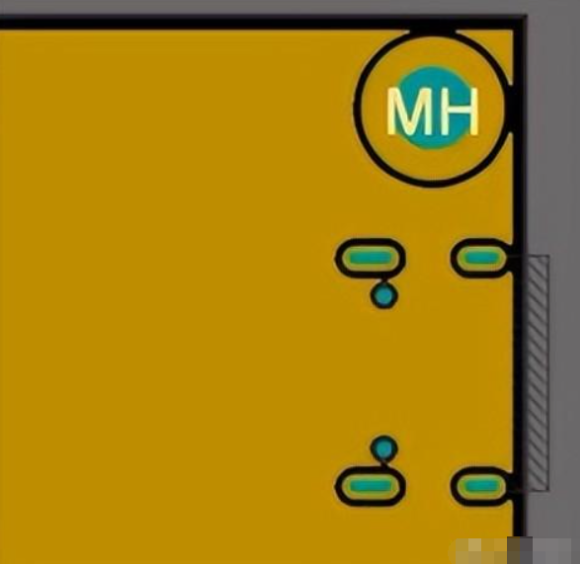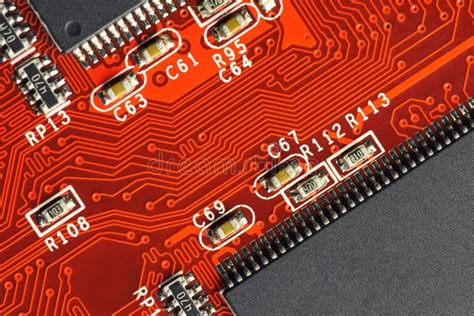Understanding PCB Printing Costs for Your Projects

Key Takeaways
When embarking on your journey in PCB manufacturing, there are several essential insights to keep in mind that can significantly influence your project’s pcb manufacturing cost. First, it is crucial to understand that the choice of materials can dramatically affect your overall costs. Different materials not only vary in price but also impact the performance and durability of your final product. For example, opting for high-quality copper or specialized substrates may lead to better performance but will also increase costs.
Next, consider how production volume plays a vital role in determining pricing. Generally, pcb manufacturing companies offer discounts for bulk orders, which means that larger runs can lead to a more cost-effective unit price. Therefore, if you anticipate needing multiple boards over time, planning for volume production can be a smart budgeting strategy.
Design complexity is another critical factor in pcb manufacturing. More intricate designs often require more advanced techniques and longer production times. If your design incorporates numerous layers or intricate pathways, be prepared for higher expenses associated with their manufacture.
"Always aim for simplicity in designs unless specific features are necessary; this will not only reduce costs but also enhance reliability."
It’s also wise to familiarize yourself with the various pcb manufacturing business models available; these can range from low-cost overseas options to premium domestic services. While cheaper options may seem attractive initially, it’s important to consider potential trade-offs regarding quality and turnaround times.
In summary, being knowledgeable about these elements will empower you to make informed decisions as you navigate the complexities of budgeting for PCB projects effectively. Remember that each element—material choice, production volume, and design complexity—interplays intricately to shape your final costs and project outcomes.
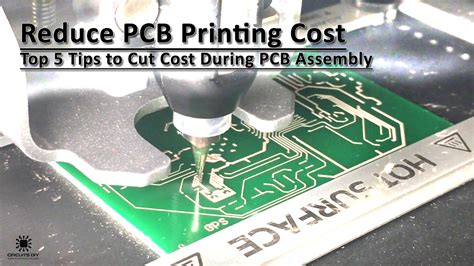
Understanding the Basics of PCB Printing Costs
When you’re embarking on a project that involves PCB manufacturing, it’s crucial to grasp the basics of the PCB manufacturing cost. Several elements can affect what you’ll ultimately pay. For instance, the choice of materials can significantly influence the overall cost; high-quality materials might raise expenses, while more economical alternatives could cut them down. Additionally, understanding the quantity you intend to produce is vital. Larger production volumes typically yield lower prices per unit due to economies of scale offered by many PCB manufacturing companies. However, if you’re working on a small project or prototype, this might not apply as directly.
You should also consider the complexity of your design; intricate designs or custom features may require more sophisticated processes and tools, thereby increasing your PCB manufacturing cost. Finding a balance between quality and expense is essential in planning your budget effectively. For more detailed insights and assistance in navigating these challenges, you might check out resources offered by reputable service providers in the PCB industry, such as Andwin PCB. Understanding these key factors will not only aid you in budgeting smartly but also enhance your project’s overall quality and success rate in the competitive landscape of the PCB manufacturing business.
Factors Influencing PCB Material Choices
When embarking on a project that involves PCB manufacturing, one of the critical elements you need to consider is the choice of materials. The materials you select not only impact the PCB manufacturing cost but also influence the overall performance and reliability of your circuit boards. Common materials include FR-4, a standard choice due to its balance of performance and cost, and various types of copper, which can enhance conductivity. Additionally, you might encounter advanced materials like polyimide or ceramic, which can be essential for high-performance applications but often come with a premium price tag. Factors such as the intended application, operating environment, and regulatory standards also play a significant role in material selection.
Moreover, sourcing these materials might involve dealing with different PCB manufacturing companies, each offering various options at varying price points. Quality must not be sacrificed for cost; therefore, understanding how material choices will affect your end product is crucial for maintaining reliability while working within budget constraints. If you’re engaged in a PCB manufacturing business, staying informed about the latest material trends can give you a competitive edge, allowing you to optimize costs while enhancing quality. Ultimately, your material choices will set the cornerstone for your project’s success – influencing every aspect from performance to durability and cost-effectiveness.

The Impact of Production Volume on PCB Costs
When considering pcb manufacturing, the production volume plays a pivotal role in determining the overall pcb manufacturing cost for your projects. Essentially, as you increase the number of units produced, the cost per individual pcb tends to decrease. This is due in part to economies of scale that many pcb manufacturing companies leverage. When these companies produce larger batches, they can optimize their processes, reduce waste, and balance setup time across many units rather than just a few.
Moreover, you should also consider that smaller runs may incur higher unit costs because fixed costs—such as tooling and setup—are distributed over fewer boards. This means that for a pcb manufacturing business, managing production volume efficiently can be crucial for maintaining competitive pricing while also ensuring product quality. Always align your anticipated production volumes with your design plans; doing so allows you to capitalize on cost-saving opportunities without compromising the integrity of your prototypes. Therefore, understanding how production volume factors into cost calculations can significantly enhance your budgeting strategies and ultimately lead to more successful project outcomes.
Design Complexity: A Key Player in PCB Pricing
When it comes to the pcb manufacturing process, one of the most significant factors affecting pcb manufacturing costs is the design complexity of your circuit board. Complex designs often require more advanced techniques and machinery, which can increase overall costs. For instance, if your design incorporates multiple layers or intricate routing, you will likely find that pcb manufacturing companies charge a premium. This is due not only to the more substantial material and labor inputs required but also to the fact that a more complicated design often necessitates additional testing and quality assurance measures to ensure functionality and reliability. In contrast, simpler designs can benefit from cost-effective processes, resulting in lower prices from pcb manufacturing businesses. Therefore, while striving for innovation and advanced features in your PCB layout can be enticing, it is crucial to keep an eye on how these choices will influence your budget. Careful consideration of your design can lead to a more favorable balance between quality and cost in your projects.

Comparing Different PCB Manufacturing Options
When it comes to PCB manufacturing, the choices can be overwhelming, each with distinct implications for your project’s budget and quality. Understanding these options is crucial for making informed decisions. For instance, you may come across PCB manufacturing companies that offer a range of services from prototyping to mass production. Each service level typically comes with varying PCB manufacturing costs associated with the complexity of your design and the materials used. If you are a hobbyist or a startup, you might find that opting for lower-volume production can save costs while still delivering quality outputs. However, as your project demands escalate, transitioning to larger-scale production can lead to lower per-unit prices, but may require a larger initial investment. It is essential to weigh these factors carefully in the context of your budget to find a PCB manufacturing business that aligns with your project goals. Ultimately, comparing these different PCB manufacturing options will help you optimize both costs and quality in your endeavor.
Budgeting for Quality Prototypes: Tips and Tricks
When embarking on a journey in pcb manufacturing, effective budgeting is crucial for ensuring that you can produce quality prototypes without breaking the bank. Begin by understanding the pcb manufacturing cost breakdown, which typically includes materials, labor, and any specialized technology required for your project. Opting for the right pcb manufacturing companies can significantly influence your overall expenses. Look for those that offer competitive pricing while maintaining high standards in production quality. Additionally, consider your project’s scope and how complexity can affect pricing; simpler designs usually yield more favorable quotes. Remember, engaging a reputable pcb manufacturing business can provide you with valuable insights that help streamline your budget and avoid unexpected costs. By seeking quotes from multiple manufacturers and being clear about your specifications, you can establish a realistic budget that ensures quality—ultimately leading to successful prototype development within your financial means. Explore options like bulk orders or selecting standard materials to optimize savings while maintaining essential quality benchmarks.
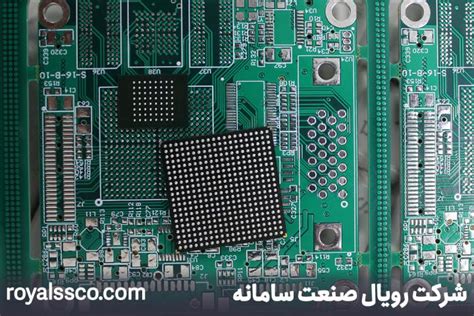
Cost-Saving Strategies for Hobbyists and Startups
If you’re embarking on a pcb manufacturing journey, especially as a hobbyist or startup, finding ways to minimize your costs without sacrificing quality is essential. One effective strategy is to evaluate your design thoroughly before moving to production; simpler designs often incur lower pcb manufacturing costs. You might also consider bulk ordering if you’re anticipating future projects, as many pcb manufacturing companies offer discounts on larger volumes. Another approach is to explore different materials; while premium materials can enhance durability and functionality, there are often more economical alternatives that still meet your needs. Furthermore, make sure to request quotes from various pcb manufacturing companies, allowing you to compare services and prices effectively. Don’t overlook the potential of leveraging local resources or collaborating with fellow hobbyists; shared knowledge can lead to reduced expenses and pooled resources for production costs. By implementing these cost-saving strategies into your pcb manufacturing business, you position yourself not just for immediate savings but also for sustained growth in the long term.
Navigating Quotes: How to Get the Best Price for PCBs
When seeking the best price for PCBs, it is essential to start by collecting quotes from multiple pcb manufacturing companies. This allows you to assess the market and understand the prevailing pcb manufacturing cost based on your specific needs. As you reach out to different providers, ensure that you provide them with detailed specifications regarding your project, such as the dimensions, layer count, and material preferences. Be vigilant in comparing not only the prices but also the materials and facilities used by each pcb manufacturing business. Quality can vary significantly among manufacturers, so look for firms with a reputation for balancing cost and craftsmanship. Additionally, consider discussing any bulk order discounts if you plan on a higher production volume, as this could lead to substantial savings in overall costs. Analyze their turnaround times as well; a lower price may not be worth it if it delays your project. Ultimately, a thoughtful approach to gathering and evaluating quotes will empower you to make an informed decision while ensuring that you stay within budget without compromising on quality.
Conclusion
In conclusion, understanding PCB manufacturing costs is essential for anyone looking to create effective electronics projects. As you navigate through the complexities of the PCB manufacturing process, it becomes apparent that various factors significantly influence the overall expenses. From the selection of materials, such as substrate types and copper thickness, to the design complexity that dictates your board’s layout and functionality, each element plays a crucial role. Additionally, production volume presents a unique challenge; often, higher quantities can dramatically lower the per-unit cost but may require a substantial upfront investment. By carefully considering these factors and possibly consulting multiple PCB manufacturing companies, you can strike a balance between cost-efficiency and quality. Whether you’re managing a small-scale hobby project or a burgeoning PCB manufacturing business, having a clear budget plan will help you allocate resources wisely and ensure that you achieve your project goals without overspending. Adopting strategic planning allows for better financial management and ultimately contributes to successful project outcomes.
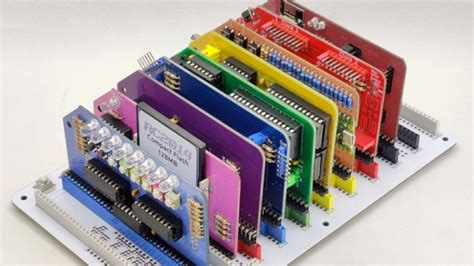
FAQs
What factors affect the overall PCB manufacturing cost?
The pcb manufacturing cost can vary significantly based on several factors including the choice of materials, the complexity of your design, and the volume of production. Higher quality materials and complex designs generally lead to increased costs, while larger production volumes may reduce per-unit pricing.
How do I choose a good PCB manufacturing company?
When selecting pcb manufacturing companies, consider their reputation, customer reviews, and their ability to meet your specific requirements. Checking their experience with similar projects can also provide insights into their reliability and quality of output.
Is it cheaper to produce PCBs in bulk?
Yes, most pcb manufacturing businesses offer reduced rates for bulk orders. Producing larger quantities typically results in a lower per unit cost, which is an important factor to consider when budgeting for projects.
What should I look for when requesting a quote for PCBs?
When seeking quotes from pcb manufacturing companies, it’s essential to provide detailed specifications regarding your design complexity and material choices. This transparency allows manufacturers to provide accurate pricing. Also, compare quotes thoroughly to ensure you’re getting the best value without sacrificing quality.

